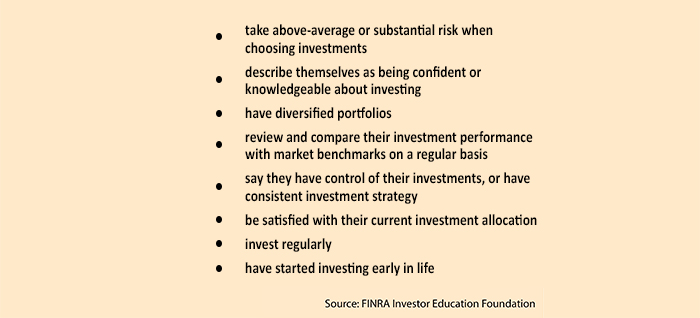Women & investing
Women & investing

Is this time different?
Why the message of active investment management should resonate with female prospects.
The financial-services industry has invested a lot of time, attention, and money over the last five years marketing to women—or at least talking about marketing to women. As a financial professional, you too have most likely been barraged with why and how you should be better focused on reaching out to female prospects and clients.
At a financial conference I attended about four years ago, I recall a breakout session geared to developing more female clients. The well-qualified moderator who led the discussion had conducted extensive research with financial advisors across the country who were proactively marketing for female clients and reported on best practices.
One advisor had offered to treat female clients to lunch on their birthdays, and also encouraged them to invite close friends to join the birthday celebration. Another recommended tactic was to hire a professional photographer the day after Thanksgiving, offering a family photo session to female clients or prospects as a gift. Numerous other client event ideas that should theoretically appeal to women were suggested. Fashion, arts, and ways to help professional women connect with other like-minded women were all put forward as avenues to develop closer ties within this demographic.
Women represent 40% of the high-net-worth segment, and 84% of women are involved in their household financial and retirement planning.
To put it mildly, I was underwhelmed by the strategies. I have long felt that there should be far more women working in the financial-services world. I have also felt that women are highly underserved and poorly communicated to by our industry—and that I want and should have far more female clients than I do.
So, at the conclusion of the workshop, I approached the presenter, asking her what I was doing wrong. I had consistently made efforts to work with more women, and my experience to date was both frustrating and unproductive. I could hardly believe my ears when she admitted in no uncertain terms that although the marketing ideas she had presented were “cutting edge,” we were still at least five years away before the culture of women and investing matured to a point where any of us might have any real hopes of actually developing a valid female clientele.
High-income women are less likely than men to:

Now that we are approaching the fifth anniversary of the seminar, I am reconsidering whether the time is now ripe to work harder in this area. On the one hand, I still find that the majority of our baby-boomer female clients are not deeply interested in involving themselves in the details of their finances. Furthermore, they often rely on and defer to the men in their lives in this regard. It also seems that a disproportionate percentage of female prospects are more successfully targeted by female investment advisors who specifically cater to other women. While there is certainly nothing wrong with this, I too would like to better understand and meet the needs of this segment.
Notwithstanding the challenges, there are many reasons why all of us should want more female clients, and much of it is reflected in research. The Bureau of Labor Statistics in 2013 found that women represent 40% of the high-net-worth segment and that 84% of married women are involved in their household financial and retirement planning.
Versta Research recently evaluated financial issues involving women on behalf of Wells Fargo. Their survey found that 82% of affluent women managed the household budget and purchasing decisions. However, only 46% were taking primary responsibility for their investment accounts. For married women, this rate dropped to 34%, more or less in line with my personal experience. Kathleen Murphy, Fidelity Investments’ president of personal investing, has recently made similar comments, saying, “Women work really hard to progress in the workforce; they work hard for that money. But when you take the next step (toward investing), that’s where they lose confidence.” Murphy sees the issue continuing even for millennial women who, though well-educated and ambitious, tend to defer to their spouses or partners on financial decisions.
The importance of cracking this marketing door open is highlighted in a 2013 Prudential study that reported that most women do not work with a financial advisor. Yet for those women who do, they report having more assets, more diversified portfolios, and greater confidence and preparedness in reaching their goals. Furthermore, as you undoubtedly know, life expectancy for females exceeds that of their male counterparts. Once a wife loses her husband, the same study found that 70% will leave “their husband’s” advisor.

Other reasons to re-energize marketing efforts to women come from a recent study conducted by BlackRock that found that women are generally more patient investors than men. They are more open to opinion from others and view investing from the vantage of a long-term planning process rather than a competition or a contest. This is the antithesis of an attitude that frequently impacts male clients, who are more likely to consider themselves experts with respect to financial management (whether they truly are or not).
As evidence of women’s analytical skills and inherent business and financial acumen, Barclays recently launched an exchange-traded note that specifically links its performance to companies led by a female executive officer. Because many of these companies and their female executives are younger, it may be that we are finally at the verge of change. It also likely means that there will be far greater opportunities to work with and help female millennials become more engaged in investment decisions.
Women are more averse to risk and concerned with capital preservation, making them ideal candidates for active investment management.
Because the female client is so underserved, and because women, as the research so clearly indicates, are more averse to risk and very concerned with capital preservation, their characteristics make them in many ways the perfect clients for anyone who practices active investment management. The tenets of active investment management also dovetail perfectly with an interest in securing self-sustaining retirements while also preserving a family legacy.
Combining all of these factors with the female market’s receptivity to financial education, and the potential for learning about a new and more modern approach to portfolio management, makes them ideal candidates for a holistic active management investment plan. We should all make this the time that we nurture our skills and approach in a way that motivates more women to take an active stake in their financial success.
The opinions voiced in this material are for general information only and are not intended to provide specific advice or recommendations for any individual. The opinions expressed in this material do not necessarily reflect the views of LPL Financial. Securities offered through LPL Financial, Member FINRA/SIPC.
 Gregory Gann has been an independent financial advisor since 1989. He is president of Gann Partnership LLC, based in Baltimore, Maryland. Gann Partnership provides objective, unbiased financial planning and active investment management for individuals, families, and businesses. (Securities offered through LPL Financial, a registered investment advisor. Member FINRA/SIPC.) Mr. Gann also serves clients as a certified divorce financial analyst. gannpartnership.com
Gregory Gann has been an independent financial advisor since 1989. He is president of Gann Partnership LLC, based in Baltimore, Maryland. Gann Partnership provides objective, unbiased financial planning and active investment management for individuals, families, and businesses. (Securities offered through LPL Financial, a registered investment advisor. Member FINRA/SIPC.) Mr. Gann also serves clients as a certified divorce financial analyst. gannpartnership.com
